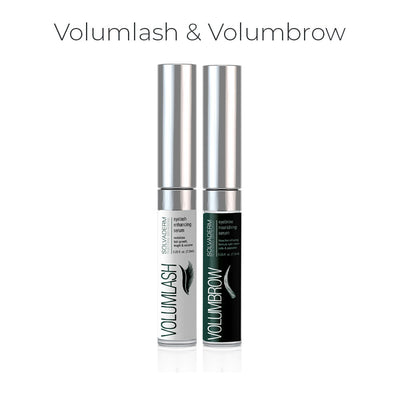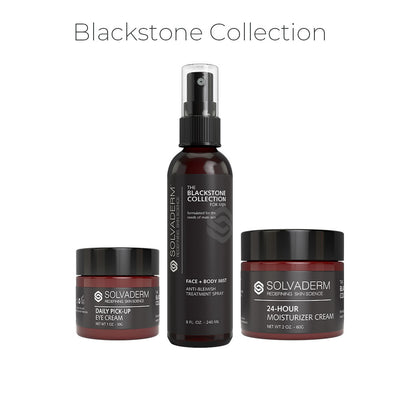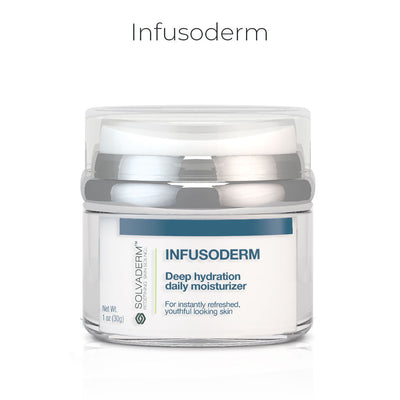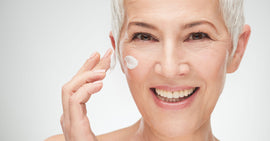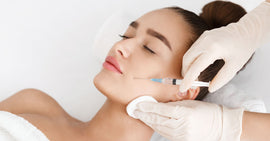Are you struggling with acne even after trying various products? Have they been ineffective so far?
If you are experiencing acne that doesn't seem to respond to typical treatments, you may be dealing with fungal acne. Unlike other types of acne, fungal acne is caused by an overgrowth of yeast on the skin. If you are using products and treatments that only target bacteria rather than yeast, it's unlikely that you will see any significant improvement.
Let’s break down the answer to “What Is Fungal Acne?” and how to get rid of it for good.
What Is Fungal Acne?
Fungal acne occurs when hair follicles are infected with fungus, specifically yeast. The medical term for this condition is Malassezia folliculitis or Pityrosporum folliculitis.[1]
Fungal acne appears as tiny, itchy red bumps or whiteheads with pockets of pus.
You’ll commonly find fungal acne on the forehead, hairline, and back. As opposed to acne caused by bacteria, known as acne vulgaris, fungal acne is quite itchy and occurs in clusters.
Fungal acne can persist for years due to its common misdiagnosis as acne vulgaris.[2] It is crucial to determine the cause of the acne to ensure proper treatment since common acne treatments like antibiotics won’t be effective for fungal acne.
Types of Fungal Acne
Excess yeast can manifest on the skin in various ways.
Closed Comedones: Closed comedones appear when dead skin cells, oils, bacteria, or fungi block follicles. They look like tiny white bumps on the skin. Fungal acne on the forehead looks like closed comedones.
Inflammatory Papules and Pustules: In the case of fungal acne, the skin can erupt in inflamed papules or pustules.
An inflamed papule looks like a raised red bump on the skin with no visible pus. An inflamed pustule is a raised red bump on the skin with visible white or yellow pus pockets.
Folliculitis: Folliculitis is inflammation or infection of hair follicles, caused by bacteria or fungi, and appears as small red or pus-filled bumps. In fungal acne, yeast-infected hair follicles can also cause this condition. Folliculitis from yeast commonly occurs on the buttocks, armpits, back, and chest.[3]
Seborrheic Dermatitis: Seborrheic dermatitis, also called dandruff, is an inflammatory skin condition on the scalp. It results from excess oil production or alteration of the skin microbiome, specifically excess yeast.[4]
Symptoms of seborrheic dermatitis include an itchy scalp, yellow or white scaly patches, flaking skin, and burning sensations.
How Do I Know If I Have Fungal Acne?
There are defining features of fungal acne that set it apart from bacteria-induced blemishes. Fungal acne is itchy and non-responsive to oral or topical anti-bacterial acne medications.
Other features of fungal acne to look out for involve its location and accompanying conditions. As previously mentioned, fungal acne usually occurs in specific areas. You’ll commonly find fungal acne on the forehead, back, shoulders, chest, and arms.
You are most likely dealing with fungal acne if you have other yeast-related skin conditions like psoriasis, athlete’s foot, jock itch, and dandruff. All of these conditions indicate an imbalanced skin microbiome with overgrowth of yeast.
Who Might Get Fungal Acne?
Specific individuals may be more susceptible to fungal acne and yeast-related skin conditions. Fungal acne is common in adolescents and teenagers since the hormonal shifts during these stages of life can lead to excess oil and sebum production and changes in the skin microbiome.[5]
You may also be more susceptible to fungal acne if you:
- Were recently on antibiotics
- Have an existing medical condition that weakens the immune system
- Live in a hot and humid climate
- Play sports and sweat a lot
- Use skincare products with comedogenic oils
Causes of Fungal Acne
Here’s a breakdown of the different causes of fungal acne and yeast-related skin conditions:
Malassezia Overgrowth: Everyone has the yeast that causes fungal acne on their skin. This type of yeast, known as Malassezia, only becomes a problem when your skin’s immune system can’t keep it in balance with other microorganisms like bacteria.
Your skin may not be able to keep Malassezia in check if your immune system is suppressed, you’re using pore-clogging skincare products, or you're applying anti-bacterial topical products that throw off the normal microbiome of your skin.
Warm and Humid Environments: Hot and humid climates can lead to fungal acne due to clogged pores and the thriving of yeast such as Malassezia, in warm and humid environments.
Excess Sebum Production: Certain internal and external factors contribute to excess sebum and oil production which can clog hair follicles and trap yeast inside. For example, excess oil production around the scalp and hairline can clog follicles and lead to fungal acne on the forehead.
Use of Antibiotics: As mentioned in the “Malassezia Overgrowth” section, antibiotic use can prevent your gut and skin’s microbiome from keeping yeast populations in check. Although antibiotics kill pathogenic bacteria, they also kill beneficial bacteria. Wiping out healthy bacteria populations allows yeast to overgrow.
Hormonal Changes: Certain hormonal changes, such as those that occur during puberty or teenage years, can lead to excess sebum and oil production. As described above, excess sebum and oil production clog pores and trap pathogens, such as yeast, inside follicles, ultimately resulting in conditions like fungal acne.
High levels of androgens can especially contribute to excess sebum production and acne.[6]
Weakened Immune System: A weakened immune system, such as steroid use or an underlying medical condition, can make an individual more susceptible to fungal acne. When your skin and body’s host defenses aren’t working optimally, it’s harder to prevent yeast and bacteria overgrowth.[7]
Excessive Sweating: Yeast thrives in warm and humid conditions, making sweaty skin a perfect environment for overgrowth. Excess sweat can also clog pores and hair follicles, potentially leading to infections if yeast or bacteria become trapped in these follicles.
Tight Clothing: Tight clothing can prevent proper airflow and trap heat and moisture. The hot and moist skin conditions that tight clothing creates allow the yeast to overgrow.
Symptoms of Fungal Acne
Fungal acne symptoms can vary per individual so it’s better to consult with your dermatologist if you have questions or concerns.
Here’s an overview of the most common fungal acne symptoms:
Small and Itchy Bumps: Fungal acne usually presents as small and itchy red bumps. These bumps may or may not be filled with pockets of pus.
Redness and Inflammation: The skin around fungal acne breakouts is often red and inflamed and may sting occasionally or upon touching it.
Pimples or Pustules: Fungal acne can present as bumps with or without pus. Fungal acne pustules look like red bumps with a white head.
Scaling or Flaking: With fungal acne, excess sebum, and oil production may cause inflamed patches with scaling or flaking, which can appear white or yellow. Seborrheic dermatitis is the term used for scaling or flaking of the scalp.
Those who experience scaling or flaking of the scalp due to yeast overgrowth usually have fungal acne on the forehead.
Occurs on the Chest, Back, and Shoulders: The most common areas for fungal acne include the chest, back, shoulders, forehead, and hairline. Many of these areas are prone to warm and damp skin conditions, allowing for clogged pores and yeast overgrowth.
What Is the Difference Between Regular and Fungal Acne?
Regular acne, also called acne vulgaris, is caused by bacteria. Fungal acne is caused by yeast, most commonly Malassezia.
Compared to regular acne, fungal acne is more itchy. Fungal acne also occurs in clusters on the forehead, chest, back, and shoulders. Although regular acne can also occur in these areas, it is most common on the face.
Regarding their appearance, fungal acne presents as small red bumps with or without pustules. Fungal agne can also present as white closed comedones. In contrast, regular acne can present as blackheads, whiteheads, or deeper and more painful cysts.
We suggest consulting a dermatologist if you have trouble distinguishing between regular and fungal acne. They can provide a thorough examination, go through your medical history, and even take skin samples to determine underlying pathologies.
How To Get Rid of Fungal Acne
Treating fungal acne involves a multi-step approach. Here are some things you should consider:
Use A Cleanser: A powerful cleanser will clean your pores and remove oil, excess sebum, and dead skin cells. We recommend the Rejuvoderm Clarifying Cleanser, which deeply cleanses the skin without overstripping it. It also features several exfoliating acids that slough off dead skin cells, dissolve excess sebum, and increase skin cell turnover.
Maintain Good Hygiene: Maintaining good hygiene can prevent yeast from overgrowing. We suggest showering and changing your clothes after playing sports or sweating excessively. Using microbiome-friendly shampoo and body wash may also be helpful.
Use High-Quality Skincare Products: The quality of your skincare products dramatically affects the results you’re looking to achieve. When researching how to get rid of fungal acne, using the right skincare products should be a priority.
In addition to using a good cleanser, consider products that target blemishes and help balance oil production. The Zeroblem Blemish Treatment Serum can help treat fungal acne by cleansing the skin, dissolving excess oil, balancing your skin’s pH, and getting rid of bacteria and acne-causing fungus. It features potent ingredients like colloidal sulfur and salicylic acid.
You might be hesitant to hydrate your skin when dealing with fungal acne for fear of contributing to excess oil production. However, over-drying your skin can disrupt your skin’s moisture balance and lead to the overproduction of sebum. Stick with a moisturizer that hydrates but doesn’t clog pores.
The Infusoderm Deep Hydration Daily Moisturizer is light enough to prevent pore clogging but powerful enough to quench thirsty skin. This moisturizer also has benefits like brightening the skin and protecting against free radical damage. Its unique ingredients, like snow algae and cloudberry, deliver impactful results.
Limit Sugar and Carbohydrate Intake: Research[8] suggests that certain nutrition factors, such as excess sugar consumption, directly influence the growth rate of yeast populations.
When treating your fungal acne, stick to a low-sugar diet. High-sugar foods include processed carbohydrates, sugar-sweetened beverages, and baked goods.
Wear Breathable Fabrics: Wearing fabrics that allow for proper airflow and ventilation prevents heat and moisture from getting trapped. Breathable fabrics include cotton, linen, bamboo, nylon, and silk.
Eat Probiotic-Rich Foods: Incorporating probiotic-rich foods into your diet helps your body rebalance its gut and skin microbiome. Beneficial bacteria and yeasts found in probiotic foods help keep pathogenic bacteria and yeasts in check.
Good sources of probiotics include yogurt, kimchi, sauerkraut, miso, tempeh, and kefir.
Be Patient and Consistent: When considering how to get rid of fungal acne, keep in mind treatment length can vary depending on the severity, location, and your medical history. However, if you feel like your progress is stagnant, it’s best to consult with your doctor or a dermatologist for assistance.
FAQs
Refer to the sections below to find answers to commonly asked questions about fungal acne and how to get rid of it.
How Does Fungal Acne Start?
Yeast overgrowth that eventually leads to fungal acne starts with the perfect environmental conditions. Yeast thrives in hot and humid environments.
Fungal acne can also result from antibiotic use as it can disrupt the normal flora of your gut and skin, allowing certain strains of yeast to overgrow.
Does Salicylic Acid Help Fungal Acne?
Salicylic acid is a beta-hydroxy acid (BHA) that exfoliates the skin. It can help fungal acne by preventing excess dirt, oil, and sebum from clogging pores.
What Triggers Fungal Acne on the Forehead and Face?
Several factors can lead to fungal acne on the forehead and face. Here’s a list of things to consider:
- Topical antibiotic use
- Excessive sweating
- Pore-clogging skincare products
- Hot and humid environmental conditions
- Suppressed immunity
How Long Does It Take to Treat Fungal Acne?
The treatment time for fungal acne can vary. Some treatments may take up to four weeks. For instance, a full course of ketoconazole cream lasts up to four weeks or until the treatment area clears.
Should I Pop My Fungal Acne?
We don’t recommend popping your fungal acne as it risks spreading the infection. Popping your fungal acne could also lead to inflammation and scarring.
Conclusion
Fungal acne is a dermatological condition in which yeast, such as Malassezia, infects hair follicles and pores, leading to skin eruptions.
It’s most common to find fungal acne on the forehead, chest, back, and shoulders.
Common treatments include a proper skincare routine, a healthy diet, and prescription medications. When researching how to get rid of fungal acne, remember that prevention is just as important as the cure.
To prevent fungal acne, maintain good hygiene and wear loose fabrics.
We suggest consulting with your dermatologist for more in-depth information on what fungal acne is and how to treat it.
References
1] ↑https://my.clevelandclinic.org/health/diseases/24341-fungal-acne
2] ↑https://www.ncbi.nlm.nih.gov/pmc/articles/PMC3970831/
3] ↑https://www.mayoclinic.org/diseases-conditions/folliculitis/symptoms-causes/syc-20361634
4] ↑https://www.ncbi.nlm.nih.gov/books/NBK551707/
5] ↑https://my.clevelandclinic.org/health/diseases/24341-fungal-acne
6] ↑https://www.ncbi.nlm.nih.gov/pmc/articles/PMC3969667/
7] ↑https://www.ncbi.nlm.nih.gov/pmc/articles/PMC10078452/
8] ↑https://www.ncbi.nlm.nih.gov/pmc/articles/PMC5572443/


